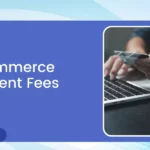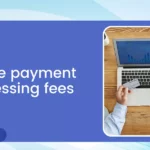Navigating the intricacies of the Stripe pricing model is crucial for businesses seeking clarity and cost-effectiveness in their payment processing. In this comprehensive guide, we delve into the various aspects of Stripe’s pricing structure to provide businesses with a clear understanding of how they are charged for using Stripe’s services.
From transaction fees to additional charges and volume discounts, we explore the nuances of Stripe’s pricing model to empower businesses to make informed decisions about their payment processing strategy.
Moreover, we are excited to introduce our exclusive tool, the “Stripe Fee Calculator,” designed to simplify the process of estimating Stripe transaction fees. This invaluable resource enables businesses to accurately assess their potential costs based on transaction volume and value, helping them plan and budget effectively.
By gaining insights into Stripe’s pricing and utilising our calculator tool, businesses can optimise their payment processing costs, streamline financial management, and drive greater efficiency in their operations. Join us as we demystify Stripe’s pricing and equip businesses with the knowledge and tools they need to thrive in the digital economy.
Who Is Stripe Best For?
Stripe is ideal for small businesses seeking efficient and versatile payment processing solutions. Its popularity among small business owners stems from its user-friendly interface, seamless payment processing capabilities, and flexibility. With Stripe, small businesses can easily accept credit card payments without being bound by minimum monthly revenue requirements, making it accessible to startups and growing enterprises alike.
Moreover, Stripe offers a range of point-of-sale (POS) tools that empower businesses to manage transactions effectively in physical and online environments. Its support for over 135 currencies enables businesses to cater to a global customer base, expanding their reach and potential for growth.
Additionally, Stripe allows businesses to customise the checkout experience for their customers, fostering brand loyalty and enhancing the overall user experience. Whether you’re a budding entrepreneur or an established small business owner, Stripe provides the tools and resources to streamline payment processing and drive business success.
Understanding Stripe Plans and Pricing
Stripe offers a transparent and streamlined pricing structure designed to cater to the needs of businesses of all sizes. With no setup, monthly, or annual fees, Stripe ensures accessibility for businesses looking to integrate payment processing seamlessly. The per-transaction fees are clear and concise: businesses are charged 2.9% plus 30 cents per transaction for online sales, with an additional 1% fee for international and currency conversion transactions.
Similarly, in-person transactions incur a fee of 2.7% plus 5 cents per transaction, with the same 1% fee for currency conversion or international card use. In addition to its competitive pricing, Stripe provides businesses with various value-added features to enhance their payment processing experience. The prebuilt, hosted checkout page is optimised for conversion and can be customised to reflect a company’s branding.
Moreover, Stripe offers automatic tax collection on all transactions for a nominal fee of 0.5% per transaction, along with easy-to-use tax reporting capabilities tailored to each filing market. With Stripe’s comprehensive suite of tools and transparent pricing, businesses can streamline their payment processes and focus on growth and success.
| Payment Method | Pricing |
| Online payment including Visa, Mastercard, American Express, Apple Pay, Google Pay and more | 2.9% plus 30 cents per successful card charge Plus 1% for international cards Plus 1% if currency conversion is required |
| In-Person payment through Stripe Terminal | 2.7% plus 5 cents per successful card charge |
| Bank Debits and Transfers to allow the acceptance of large payments or recurring charges | |
| ACH Credit | $1 per ACH credit payment |
| Wire | $8 per wire payment |
| Checks | $5 per check received |
| ACH Direct Deposit | 0.8% per transaction with maximum ACH fee of $5 |
In addition to its standard pricing model, Stripe offers a customisable plan tailored to businesses with unique needs, such as large payment volumes, high-value transactions, or specific business models. This plan allows businesses to negotiate large-volume discounts, multiproduct discounts, country-specific rates, and interchange pricing. Businesses are encouraged to contact the Stripe sales team for a personalised quote to explore the customisable plan options.
Furthermore, Stripe offers a range of payout options to accommodate different business preferences and needs. Businesses can expect standard payouts within two business days when Stripe is linked to their bank account. For added convenience, business owners can schedule automatic payouts on a daily, weekly, or monthly basis, or they can set a custom payout schedule to align with their financial requirements.
Stripe offers instant payouts for businesses that require immediate access to funds, allowing qualified business owners to receive payouts within 30 minutes of transaction approval. While instant payouts provide unparalleled convenience, they do incur an additional cost of 1% of the payout amount, with a minimum fee of 50 cents per transaction. With these versatile payout options, Stripe empowers businesses to manage their finances efficiently and effectively.
International Transactions Made Easy
A standout feature of Stripe is its seamless accessibility for international transactions, facilitating business expansion into global markets easily. Presently available in 47 countries, including Canada, Brazil, Japan, and Croatia, Stripe enables businesses in these regions to accept customer payments worldwide.
With support for over 135 currencies, Stripe empowers businesses to present prices in their customers’ native currencies, enhancing the purchasing experience and reducing friction in the checkout process. Stripe automatically handles tax collection in 30 countries, streamlining compliance efforts for businesses operating across borders.
Moreover, Stripe offers comprehensive global support and accepts popular payment methods worldwide, including Bancontact, EPS, Giropay, and iDEAL. However, it’s important to note that pricing may vary depending on the selected payment method, with a 1.5% fee applied for international payment methods and an additional 1% fee for currency conversion.
By leveraging Stripe’s robust international capabilities, businesses can effortlessly tap into new markets, expand their customer base, and drive growth on a global scale. With Stripe as their trusted payment partner, businesses can confidently and easily navigate the complexities of international transactions.
Navigating Credit Card Terminal Options
Investing in a credit card terminal is essential for businesses accepting credit card payments in person. These terminals come in various types, catering to different business needs, and their pricing typically varies accordingly.
Starting at $59, businesses can opt for a mobile card reader, providing flexibility and convenience for on-the-go transactions. Alternatively, countertop terminals offer stability and reliability, with prices up to $249.
The choice of a terminal depends on factors such as business model, transaction volume, and customer preferences. Mobile card readers are ideal for businesses with a high degree of mobility, such as food trucks or event vendors. At the same time, countertop terminals are suitable for stationary businesses like retail stores or restaurants.
By investing in a credit card terminal, businesses can enhance their payment processing capabilities, provide convenience to customers, and streamline the checkout experience. With various options available, businesses can select the terminal that best aligns with their operational requirements and budget constraints.
Alternatives to Stripe for Credit Card Processing
While Stripe garners recognition as a top credit card processing company, there are notable alternatives worth considering. Among the top contenders is Payment Depot, which is particularly favored by large-scale operations for its absence of a minimum processing amount requirement. Businesses with substantial transaction volumes can benefit from access to wholesale prices.
For small businesses seeking user-friendly solutions, Square emerges as a standout choice. Renowned for its comprehensive features encompassing payments, point-of-sale (POS), and inventory management, Square offers unparalleled ease of use and versatility.
Businesses prioritising exceptional customer support may find Gravity Payments an ideal fit. Renowned for its dedicated customer support team, Gravity Payments provides round-the-clock, multilingual assistance without the hassle of navigating automated systems.
When evaluating credit card processors, it’s crucial to consider the pricing structures. Payment Depot, for instance, charges a membership fee ranging from $59 to $99 per month but offers lower per-transaction fees, ideal for companies with high transaction volumes. In contrast, Stripe foregoes monthly fees but levies higher transaction fees, catering to smaller businesses with fewer transactions. By carefully assessing your business’s specific needs and transaction volumes, you can select the credit card processor that aligns best with your requirements and budget constraints.
Maximising Success with Stripe’s Suite of Tools
Stripe offers an array of tools designed to complement its payment processing services and support the success of small businesses. Among these tools, Stripe Terminal stands out for brick-and-mortar businesses, facilitating in-person checkouts with its card reader. In addition to covering the cost of the card reader, businesses incur processing fees for each transaction.
Other popular tools include Stripe Invoicing for creating and sending invoices, Stripe Billing for collecting one-time or recurring payments via various methods, and Stripe Radar for fraud protection and dispute resolution. These tools collectively enhance operational efficiency and security, enabling businesses to streamline payment processes and mitigate risks effectively.
Bottom Line
Stripe stands out as a premier choice for e-commerce ventures, offering many advantages tailored to the online marketplace landscape. Boasting advanced reporting tools, automatic payouts, and extensive resources for global operations, Stripe empowers businesses to navigate the complexities of the digital economy with ease.
Its seamless integration capabilities facilitate the creation of subscription-based business models, further enhancing revenue streams and customer engagement. Stripe simplifies the onboarding process for new e-commerce enterprises with a user-friendly dashboard and transparent pricing structure without hidden fees. Whether you’re a budding entrepreneur venturing into online retail or an established brand seeking to optimize digital transactions, Stripe provides the essential tools and support needed to thrive in the competitive e-commerce landscape. Embracing Stripe translates to efficient payment processing and unlocking a wealth of opportunities for growth and success in the digital realm.
Estimating Your Stripe Costs
Estimating your Stripe costs is crucial for budgeting and optimising expenses. By understanding the various fees associated with Stripe transactions and considering your business volume, transaction types, and potential growth, you can effectively forecast and manage your payment processing costs.
1. Free Trial & Pricing Calculator Tools
Free trial and pricing calculator tools offered by payment processors like Stripe provide invaluable assistance to businesses in estimating their potential costs. These resources allow businesses to simulate different scenarios based on their expected transaction volume, types of transactions, and other variables. By inputting relevant data into the calculator, businesses can obtain accurate projections of their payment processing expenses, enabling them to budget effectively and make informed decisions about their payment strategy. Additionally, free trials allow businesses to test out the platform’s features and functionalities before committing to a subscription, ensuring compatibility with their needs and preferences. Ultimately, leveraging these tools empowers businesses to clarify their financial obligations, optimize their payment processing strategy, and maximize cost efficiency in their operations.
Conclusion
Understanding Stripe pricing is crucial for businesses to manage their payment processing costs effectively. Stripe’s transparent pricing structure and free trial and pricing calculator tools empower businesses to estimate their expenses and make informed decisions accurately. While cost is a significant factor, it’s essential to recognise Stripe’s value proposition extends beyond pricing alone.
Stripe offers many features, including advanced reporting tools, automatic payouts, and fraud protection, enhancing operational efficiency and security. Additionally, its scalability accommodates businesses of all sizes and industries, from startups to enterprise-level organisations. By leveraging Stripe’s robust platform, businesses can streamline their payment processes, expand their customer base, and drive growth.
Ultimately, Stripe’s commitment to transparency, coupled with its comprehensive suite of features, positions it as a top choice for businesses seeking a reliable and flexible payment processing solution that meets their budgetary needs and supports their long-term success.
FAQ’s
How does Stripe pricing work?
Stripe pricing is based on a transparent per-transaction model. Businesses are charged a percentage of the transaction amount, typically 2.9%, along with a fixed fee per transaction, usually 30 cents. Additional fees may apply for international transactions or currency conversion.
How is Stripe fee calculated?
Stripe calculates fees by applying a percentage to the transaction amount and adding a fixed fee. For example, if the transaction amount is $100, and the fee is 2.9% + 30 cents, the calculation would be: (0.029 * 100) + 0.30 = $3.20.
How much does Stripe charge per order?
Stripe charges a percentage fee, typically 2.9%, plus a fixed fee per transaction, usually 30 cents. The exact amount charged per order depends on the transaction amount and any additional fees for international transactions or currency conversion.
How do I reduce Stripe fees?
Businesses can reduce Stripe fees by optimizing their pricing strategy, minimizing chargebacks and disputes, and negotiating lower rates with Stripe based on their transaction volume.
Which is better PayPal or Stripe?
The choice between PayPal and Stripe depends on the specific needs of the business. Both offer similar services but differ in pricing, features, and ease of use.
Are Stripe fees high?
Stripe fees are competitive compared to other payment processors. However, businesses should evaluate their specific needs and compare fees with other providers to determine if Stripe is the best option for them.
Is Stripe cheaper than Square?
The cost comparison between Stripe and Square depends on factors such as transaction volume, average transaction size, and specific pricing plans offered by each provider. Businesses should evaluate both options to determine which is more cost-effective for their needs.
How do you charge Stripe fees to customers?
Stripe fees are automatically deducted from the transaction amount before the funds are deposited into the business’s account. Businesses should clearly communicate any additional fees to customers before completing the transaction.
Do Stripe fees have GST?
Depending on the country and local tax regulations, stripe fees may be subject to Goods and Services Tax (GST). Businesses should consult with a tax professional to understand their tax obligations related to Stripe fees.
How much does Stripe charge per invoice?
Stripe does not typically charge a separate fee for creating or sending invoices. Instead, fees are based on transactions processed through Stripe’s payment platform, as described earlier.
Is Stripe free of charge?
Stripe does not charge setup fees or monthly fees for its standard services. However, businesses are charged transaction fees for each successful payment processed through Stripe.
Is invoicing free on Stripe?
Creating and sending invoices through Stripe is typically included as part of the standard service and does not incur additional charges beyond the transaction fees applied to payments processed through Stripe.
How much tax Stripe charges in India?
The tax implications of using Stripe in India may vary depending on factors such as the nature of the business, the type of transactions, and local tax regulations. Businesses should consult with a tax professional to understand their tax obligations when using Stripe in India.
What is better than Stripe?
There are several alternatives to Stripe, including PayPal, Square, and other payment processors. The choice depends on factors such as pricing, features, customer support, and ease of use. Businesses should evaluate multiple options to determine which best meets their needs.










